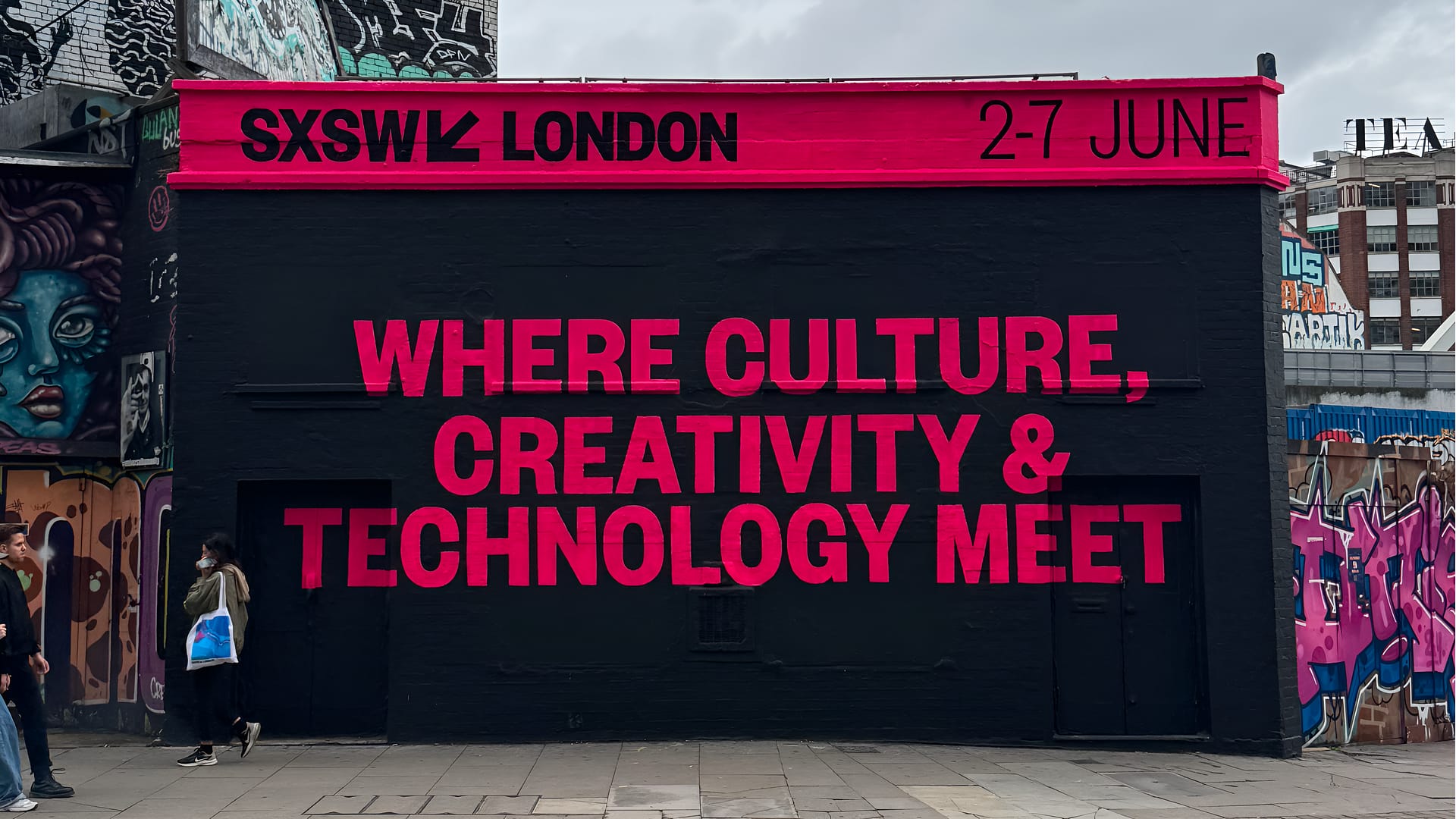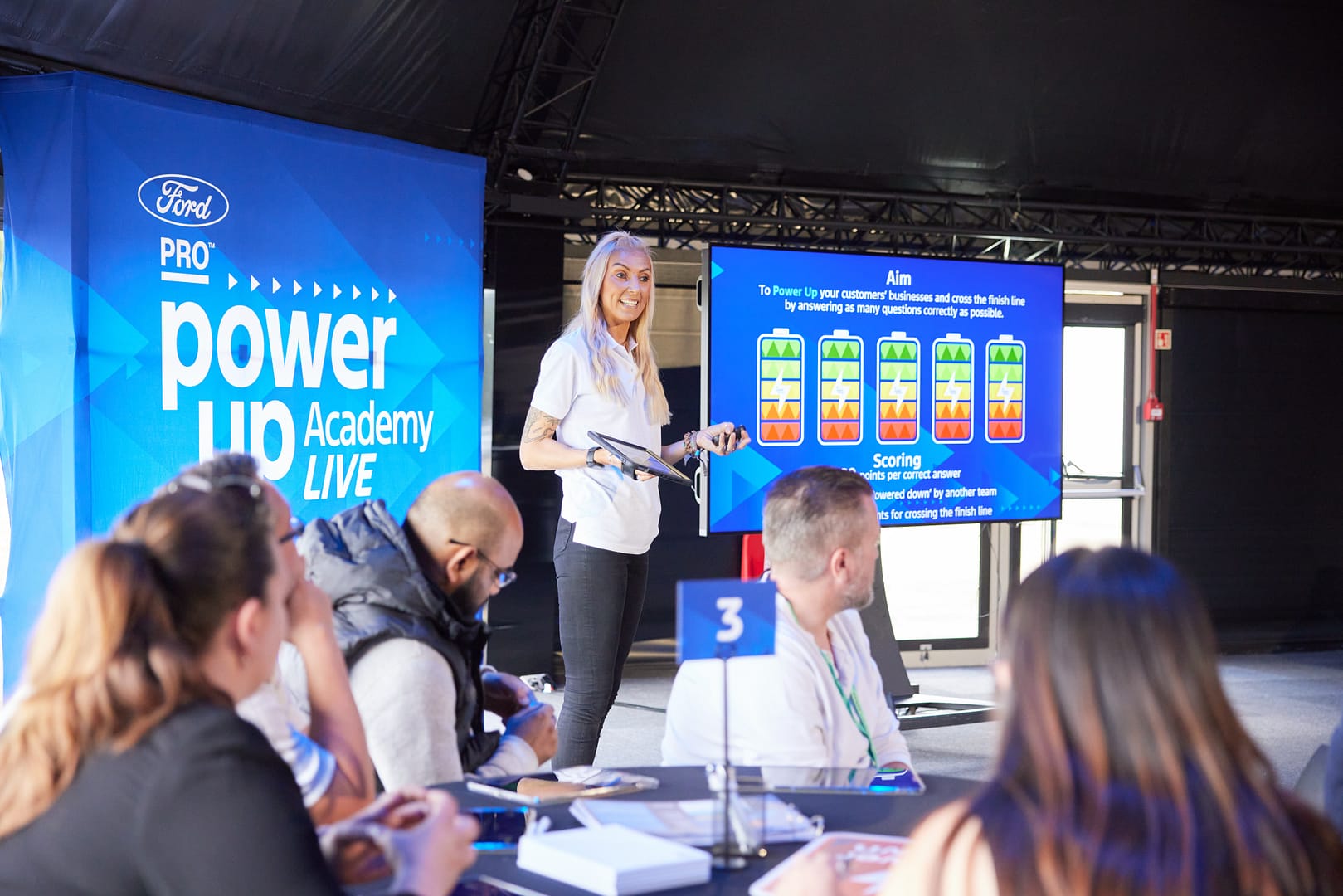
We stood in the queues so you didn’t have to!
SXSW London was part firehose, part very, very long queue. Here’s a snapshot of some of the more interesting things our Chief Strategy Officer, Tom Gray, heard and what they mean more broadly for marketers, innovators and curious minds.
“You’re not who you think you are”
So says Jim McKelvey, co-founder of Square (now Block), in a session that cut to the core of the behavioural shift from search to AI and what it means for brands and agencies. As the old saying goes: “your brand is what people say about you when you’re not in the room”, which in 2025 means “your brand is what LLMs say about you” – the weighted sum total of the conversations about and around it.
As more and more people shift to using AI engines rather than search engines as their starting point online, this creates a seismic shift for anyone trying to build a brand or communications platform, since the output from LLMs is far more opaque and far less controllable than from search engines.
But this offers an opportunity too: if you believe that the output of LLMs is a reflection of the current consensus on any topic, then quizzing ChatGPT about your brand or your category can be a bracingly truthful view of what people actually think of your brand.
McKelvey used the opportunity to reveal his new side project – pwrscore.ai, a tool that aims to visualise current brand attributes based on LLM outputs. With neat data visualisation and the ability to pit brands against each other and see change over time, it’s a first look at how brand managers might start to measure brand performance and salience. It can even throw up some provocative pairings for people that brands might want to partner with, just don’t ask who would be the algorithmically perfect person to pair with cocaine.
What it means
As LLMs become people’s go-to for answers and action, earned channels will become ever more important in ensuring brand visibility and salience. Marketers from product owners through brand managers and CMOs must think about how they engage, direct and nurture the conversations about their brand on earned channels, working with creators and media in sync with culture.
“We are the algorithm”
Sam Ryder, the man who started singing to TikTok from his shed during the pandemic and ended up as one of the UK’s biggest pop stars, on his wild journey to internet (not to mention Eurovision) stardom and back again. As he put it, “You start shouting into the void, and then one day the void shouts back”. I thought Ryder’s reflection was a pithy direction to any content creator or brand trying to blow up – at the end of the day, what works is what reaches people on a human level. Pair it with the six big unchanging human truths from Brand Anthropologist Richard Wise, who gave sage advice on entertainment from the Stone Age – from rivalry through to endearment, these are the deep stories and sensations that make us human. As true today as when they were painted on cave walls by firelight.
What it means
While it’s easy to fall down a technology rabbit hole, if you’re in the business of entertainment and storytelling, the most important thing is to stay in touch with the fundamental things that delight and attract us as humans. Those underlying, lizard-brain drivers of behaviour. As Jeff Bezos said – Everyone wants to know what’s going to change, I can build a business on the things that won’t change in the next 10 years!
“We need to bring joy back to marketing, bring brands back to culture”
Diageo CMO Cristina Diezhandino cuts to the core of a theme that played back repeatedly this year: Brands as culture creators and the opportunities and perils that present for marketers and communicators. Perhaps this is a swing away from the cold mathematics of data and performance marketing, or a natural extension of the move away from digital search, but either way the results are proven, as Diehandino pointed out, “when brands are relevant in culture, they are 6 x more likely to be successful”. Take Guinness as an example: where an age old brand can evolve with the time, but stay true to its DNA: the Power of Goodness and Community, whether that be in shortform content or immersive brand experiences like Guinness Storehouse and the new London Opengate Brewery (humblebrag: we’re proud to have worked with Guinness on both).
What it means
Note the key phrase here: ‘relevant in culture’, not ‘creating culture’. This is dependent on having a more human understanding of your customers, understanding what moves them, their passion points – the cultural niches that they hang out in – and then making them better, more rewarding, more joyful together with them.
“10 years ago, 10% of F1 fans were over 90 years old”
So says Emily Prazer, CEO of the Las Vegas F1 GP, on the dramatic change in the F1 fanbase since the sport shifted to a more entertainment-focused offering, led by the wildly successful Drive to Survive series on Netflix. These days, the fanbase is 41% female and 42% under 35. That’s opening up fresh opportunities for F1 as an entertainment proposition across categories: from F1 arcades, to F1 karting, to immersive museum experiences and more (full disclosure – we’re proud to have worked on the Macau F1 Museum). With a deep dive into the Lego and F1 partnership alongside Lego CMO Julia Goldin, Prazer showed how the two brands were perfectly paired as fan-led, category-jumping brands, and a superb example of giving product and marketing teams creative freedom to experiment, creating serendipitous moments of real, funny, human content. The now-legendary full-size LEGO drivers parade in Miami is a perfect example.
What it means
When people find something they love, they want more of it in more places. For IP owners and brands that have strong fan bases, this is a rich opportunity to evolve the product to play in many different spaces across the entertainment ecosystem, taking it to new channels, new propositions and formats.
“I spend my life in my Speedo in public, this simply enables me to monetise it directly”
OnlyFans CEO Keily Blair replayed the argument from an Olympic diver who was briefly in hot water for having an OnlyFans account. In one of the best sessions of the week, Blair laid bare the speed of change in the creator economy and the new power dynamics between creators and traditional media. It’s often said that adult-only industries are one of the earliest drivers of innovation, and this is certainly the case with OnlyFans, a lockdown success story that has become a behemoth of the media landscape (apparently, on a tax receipts basis, it’s larger than the UK fishing industry). Of note was the shift in power from channels and IP owners to individuals as athletes and entertainers start to see the potential of these platforms to enable them to go D2C, make more from their personal brands and bypass the traditional gatekeepers.
What this means
This is the tip of the spear for how the creator economy will change media, comms and marketing. Paired with the shift from Search engines to AI engines (see “you aren’t who you think you are” above), creator-led content will occupy an increasingly influential space. As creators effectively become their own channels and are more sophisticated in monetising their output, brands should get savvier in how they work together with them – think product collabs, creative partnerships and IRL moments designed to maximise the opportunity for creators.
“Our goal is to create push-button antibodies”
AI was EVERYWHERE at SXSW, but original opinions and insights were thin on the ground in the sessions I attended, at least. So this quote from Former Alphafold Team Lead and now founder of Latent Labs, Simon Kohl, stood out to me not just for the life-changing ambition of the company, but for how AI will change our products, expectations and behaviours.
AI does indeed manifest as a push-button solution to any problem. By removing so many steps from the production process, and by bringing such a sense of magic to the result, the new normal will be ‘push-button’ products.
The positive: push-button implies speed and efficiency – anything can be available at the push of a button, as if by magic. But it also implies immediacy and lack of consideration. The result is coded into the button, and the agency of the ‘pusher’ is low. So, for every argument that new AI tools will enable us to do so much more, let’s remember that push-button systems are binary – you get to control whether or not to push the button, but little else. We should consider that the power and the thinking are concentrated in the button-makers, not the button-pushers.
What this means
If you are a business, start thinking now about what your push-button should be, then build it. But also: think about where to add friction and thought inside the pushbutton experience – where might people add unique value? And if you are a button-pusher: how will you choose the buttons to push, and build value around the push of the button?
“If you’re baking blueberry muffins, you can’t push the blueberries in at the end”
Monzo’s Head of Design, Vuokko Aro, on her go-to analogy for why a brand only works when it’s truly baked into the product and the business. Done right, brand can be a powerful tool for the business to drive decisions, the customer experience, and the employee experience. Especially true for challenger brands like Monzo. Pair that with the insight from Luke Boase, founder of Lucky Saint, a self-confessed brand skeptic who became evangelist when he saw the power of a simple brand belief, and how it can shape decisions across the organisation: from product development, to hiring, to go to market, especially as you shift from start-up to scale-up.
What it means
Whether you’re a big incumbent or a challenger, having a clear brand rationale can be a massive motivator and efficiency driver for your people: energising teams around a single idea, making decisions easier, and making the product clearer, making employees happier and more motivated. Get this right, and everything else follows.
And several others that missed the cut but got me thinking…
- “We’ve gone from a toy for kids to a brand experience loved by all” – LEGO CMO on the transformation of the business, and how IP and experience drive the greatest growth.
- “Kind and thoughtful people willing to grapple with arguments” – Wikipedia Founder, Jimmy Wales, on what characterises Wikipedia volunteers.
- “50% of Gen Z ticket buyers at Coachella used a payment plan” – Entertainment Industry analyst, Rob Jonas, on the clash between Gen Z earning power, their appetite for experiences and the new commercial models in Entertainment.
- “Who you are doesn’t change, how you show up does” – Unilever CMO for Beauty and Wellbeing Leandro Barreto on how to stay true to the core as channels change ever faster.
- “AI for performance enhancement in films” – is this the new noise reduction, or the new doping?



